Spotting Scope vs Telescope: Which Should You Choose?
Last Updated on
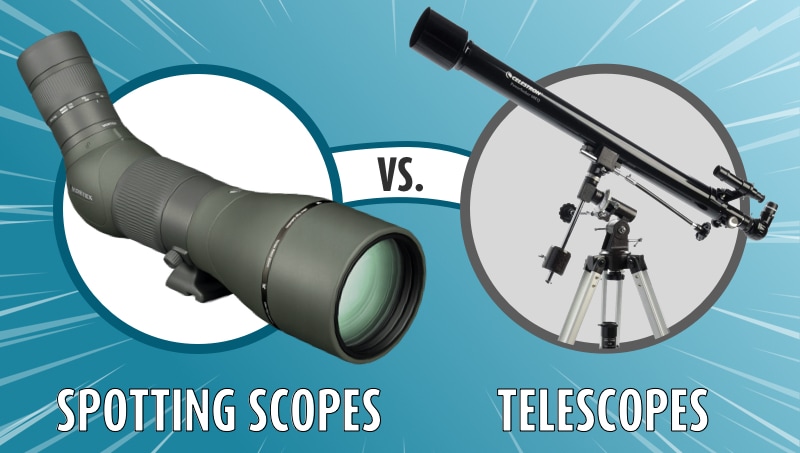
If you’re on the lookout for a good quality scope, you may be stuck deciding whether to buy a spotting scope or a telescope. Both are useful tools, and each comes with its own set of pros and cons. But don’t worry, you can use this guide to help you determine which will serve you best. It all comes down to deciding how you’ll be using your new device.

Spotting Scope Overview
A spotting scope relies on lenses to gather and focus light. While the mechanics are like the telescope, the quality of the image in a spotting scope is determined by the diameter of the objective lens. Light then passes to the eyepiece, where the image quality becomes reliant on the magnification strength.
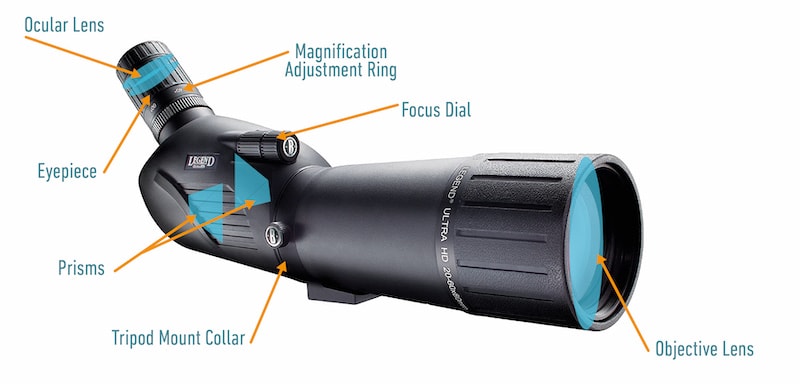
The higher the magnification, the blurrier the image, so most spotting scopes have a weaker magnification strength. These lenses are also impacted by humidity and particulates in the air, but many models offer lens coating to reduce image noise and provide a clearer view.
Lens Power & Zoom
For shorter-range viewings, such as marine sightseeing, hunting, or bird-watching, the spotting scope is going to benefit you the most. Too strong a lens will mean blurred images from too much light entering the scope, and the power of a spotting scope is much less than a telescope. For optimal viewing in a spotting scope, you’ll want to aim for 30x to 40x. Despite the weaker lenses, however, you do gain the option of a variable zoom with a spotting scope, giving you more flexibility.
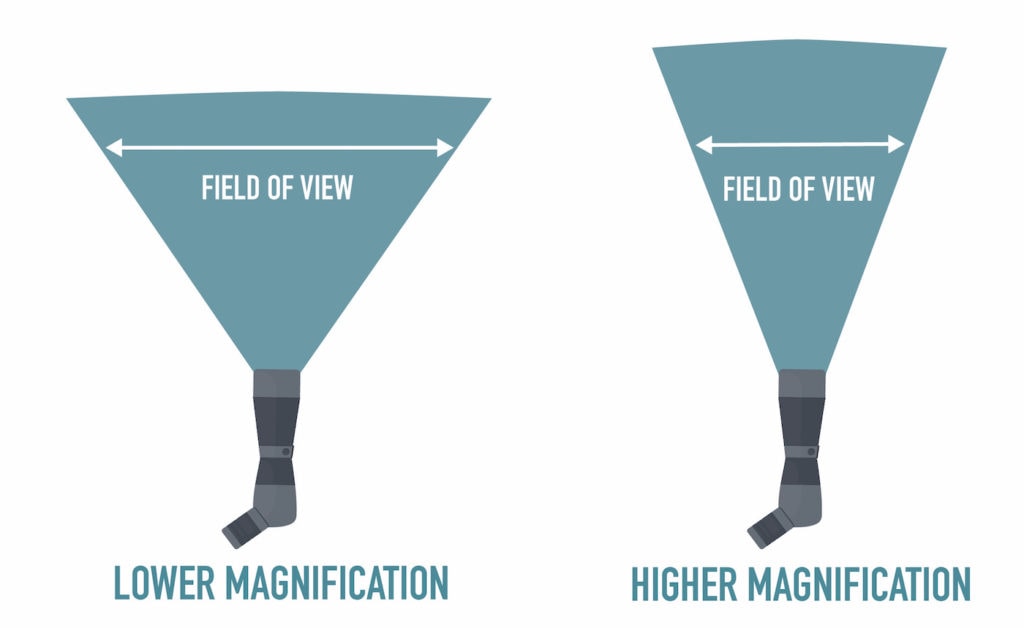
Image & Focus
Focus is another issue to keep in mind. A spotting scope can bring in details at around 6 feet, but a telescope is designed for long-distance use, which means closer objects will blur out in the eyepiece. On the flip side, if you’re trying to stargaze, a spotting scope isn’t going to provide much detail. The telescope will be far better at focusing on celestial objects, as it is the superior choice for light-gathering technology.
Pros & Cons of Spotting Scopes
- Good in low light
- Short-range viewing of moving objects
- More portable
- Durable construction
- Less expensive
- Low detail focus
- Not for long-range viewing of distant objects
- Lenses are affected by moisture

Telescope Overview
To break it down, you should first familiarize yourself with the two types of telescopes and how each scope works.
While a refracting telescope uses lenses to focus light, a reflecting telescope uses mirrors. Both types of telescope are reliant on gathering the most possible light and are known for their high magnification power.
Refracting vs Reflecting Telescopes: How Do They Work?
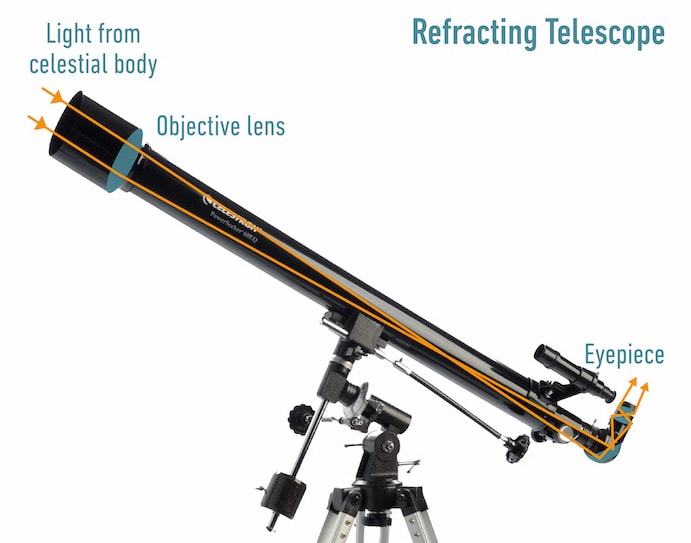
The lenses in a refracting scope are convex, which means they bend light inward to make an object look smaller. Light first passes through the main objective lens, is beamed to a focal point, and is then captured by an eyepiece lens to make it compact and viewable to the human eye.
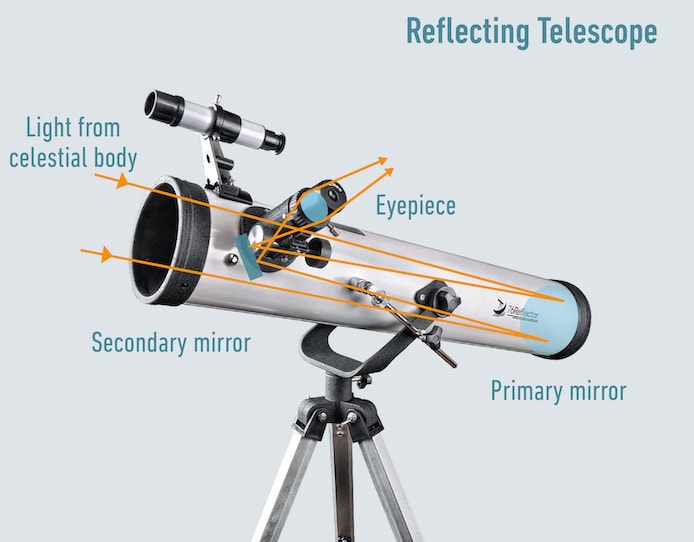
The mirrors in a reflecting scope are concave. When light passes through the objective lens, it bounces off a mirror to a focal point which is then reflected to an eyepiece. Because of the way the mirrors are supported in the device, they can be huge. Some of the biggest telescopes in the world are reflecting scopes.
Lens Power & Zoom
Telescopes will win any contest for potential lens power. Telescopes are built to let in maximum light, which is great for stargazing since objects in space don’t possess their own natural light. Home telescopes can range from 90x to 150x magnification, which will take your astronomy viewing to a new level. Zooming, however, is much harder with a telescope. Most telescopes require a change of lens for different degrees of magnification.
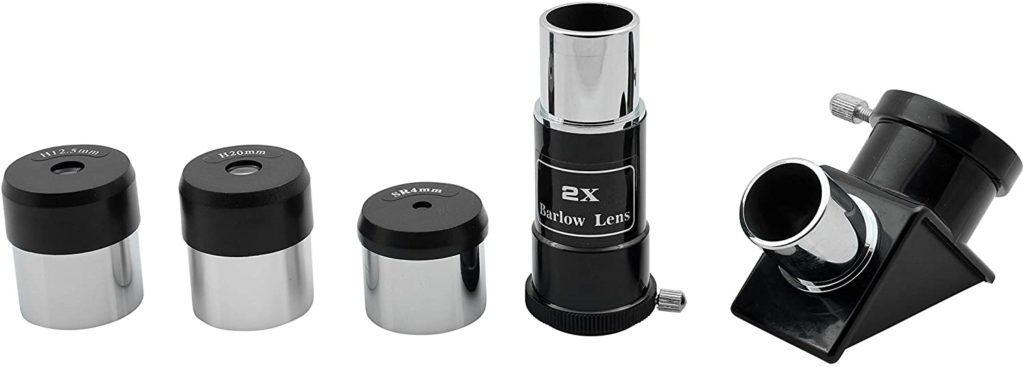
Image & Focus
Keep in mind that trying to view short ranges through a telescope might confuse. Refractor telescopes flip the image horizontally, making everything look backward. Reflector telescopes flip vertically, which means if you’re trying to spot a bird, you’ll be looking for them upside down. Spotting scopes provide a static image, which means you’ll be viewing the world as nature intended.
Pros & Cons of Telescopes
- Two types of lens styles
- Maximum light exposure
- High power
- Greater magnification for distant objects
- Less portable
- Less durable
- Poor zoom ability
- Expensive

Portability & Durability
Spotting scopes are designed for hunting and outdoor use, which means they’ve been built with durability in mind. While they can be heavy, their smaller size means they’re easier to stow in a backpack. Telescopes tend to be more fragile, as they’re designed for static use and are typically set on a tripod. They are also longer, which makes them more awkward to pack and tote around.

Bang for the Buck
A good spotting scope can set you back anywhere from $80 to $1000 (and beyond). Waterproofing, weatherproofing, and lens power will certainly impact your cost, as well as the inclusion of a tripod. Keep in mind that you’re also paying for something that’s both adjustable and durable.
You could easily spend less than $300 and over $3000 on a decent telescope. Lens sizes, mounting, and electronic capabilities will affect your cost here, and refractors tend to run lower than reflectors. One aspect to consider is that a telescope can be more of a home fixture, and the investment can last you for many years.

Conclusion
Make a list of the ways you intend to use your new scope. If you find that most of your time will be spent on long-distance viewing and portability isn’t much of an issue, go for the telescope. If your list includes wildlife viewing, outdoor adventures, or sports, and you know you will need the ability to pack up and go, the spotting scope is your best bet. Of course, if you are equally drawn to both needs, you may just have to break down and get one of each. Either way, the varied technology for both scope types will certainly provide options to fit your budget.
About the Author Robert Sparks
Robert’s obsession with all things optical started early in life, when his optician father would bring home prototypes for Robert to play with. Nowadays, Robert is dedicated to helping others find the right optics for their needs. His hobbies include astronomy, astrophysics, and model building. Originally from Newark, NJ, he resides in Santa Fe, New Mexico, where the nighttime skies are filled with glittering stars.
Related Articles:
How to Clean a Refractor Telescope: Step-by-Step Guide
Monocular vs Telescope: Differences Explained (With Pictures)
How to Clean a Telescope Eyepiece: Step-by-Step Guide
How to Clean a Rifle Scope: 8 Expert Tips
What Is a Monocular Used For? 8 Common Functions
How to Clean a Telescope Mirror: 8 Expert Tips
Brightfield vs Phase Contrast Microscopy: The Differences Explained
SkyCamHD Drone Review: Pros, Cons, FAQ, & Verdict
